#ww2 german armour
Explore tagged Tumblr posts
Text
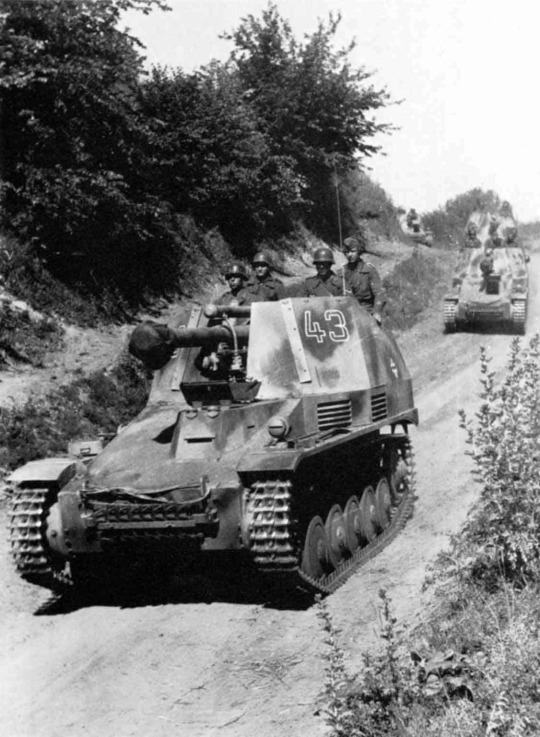
Wespe self-propelled howitzers from the 2nd Battalion of the Großdeutschland Artillery Regiment, moving towards the front line along a country road during Operation Citadel (Battle of Kursk), July 1943
#germany#ww2#eastern front#wespe#battle of kursk#1943#grossdeutschlabd division#großdeutschand#operation citadel#ww2 german armour#self propelled guns#heer#ww2 german army
41 notes
·
View notes
Text

Tiger 131
PzKpfw VI Ausf. E in the Museum Tank, Bobington
Photo by Megashorts in Flickr
#PzKpfw VI Ausf. E#panzer vi#tiger#131#tank#panzer#german#ww2#wwii#armour#bobington#museum#the tank museum#afv#flickr#heavy tank#fury
17 notes
·
View notes
Text

Tiger II at Haustenbeck, August 1945 - Colorized
"Kurt Arnoldt in front of an early production Tiger II at Haustenbeck. Photo dated around August 1945."
Specifically, this is Tiger II number 280 009 or 280 012 - its identity is still not entirely confirmed. We do know it was modified and used as a test mule at Haustenbeck before its capture.
In Summer 1945, Nazi Germany surrendered and Allied intelligence actively sought targets of interest from industrialists to engineers. Three men, key to the development of German tanks and AFVs in WW2 were identified; Kurt Arnoldt - the Chief Technical Engineer for Henschel at Haustenbeck and the man primarily responsible for the 'King Tiger', Gerd Stieler von Heydekampf - Managing Director at Henschel und Söhn and later to be the President of the Panzer Kommission, and Heinrich Ernst Kniepkamp as head of Waffen Prufamt 6 responsible for German armoured fighting vehicles.
Interrogated by Allied intelligence officers, their views, opinions, and insights into the reasons why German tanks and vehicles were developed the way they were, why they looked like they did, and why projects like the E100 and Maus were given the go-ahead were recorded. This colorization appears on the cover of Steel and Secrets: Interrogating German Tank Engineers 1945 by Andrew Hills. The book is available for purchase here.
Full resolution photo is available here.
36 notes
·
View notes
Note
You just came up on my dash, and I've got to say, your Stormcast Eternals are incredible, I'm in love with the paintscheme.
If you wouldnt mind, could you tell me what paints/techniques you used for them, because im heavily considering the purple/dark metallic vibe for my own Eternals.
Thanks so much! I'm really glad you like my paint scheme! I did them as a practice run for my Lethis City of Sigmar scheme and I refined it a little over the course of doing it. More than happpy to share my process with you:
Prime all black.
Airbrushed Led belcher silver all over not caring to be neat but making sure the armour is all covered.
Then Used Vallejo Black dip wash (but brushed on) as an all over wash on the armour. Now this wash is heavier than nuln oil and leaves a bit of a dirtier finish (which is what I wanted) but a good black shade wash would also do.
I then drybrushed the armour in downward motions with Led Belcher silver to catch the edges and make it less dirty in places where too much of the dip wash settled.
I then layered on Army Painter Shining Silver on bits like chest plates and the edges of things.
For the purple parts, do these steps after all the silver:
Base with Barak-Nar Burgundy
Nuln wash the Barak-Nar Burgundy parts
Layer Barak-Nar Burgundy over the top, leaving recesses black and dark, to begin to bring definition and shape to the area you're painting.
Layer 50/50 mix Barak-Nar Burgundy with Screamer Pink (this was like 2-3 thinned coats), continuing to build up the shape of the area you're painting.
Layer Screamer Pink.
Then highlight 50/50 mix screamer pink and Vallejo German Camo WW2. This is to be done sparingly and if the transition is too harsh, wash over it with a watered down Screamer Pink.
Rust on the armour: I watered down to a wash consistency some Doombull Brown and applied it on parts of the armour where rust would appear. Like in gaps and around bolts.
Hope that helps, happy painting!
#painting miniatures#age of sigmar#painting warhammer#stormcast eternals#paint scheme#painting tips#painting warhammer tutorial
3 notes
·
View notes
Text

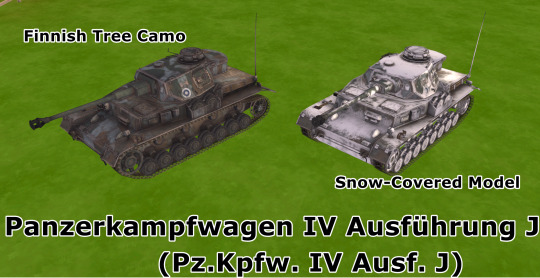

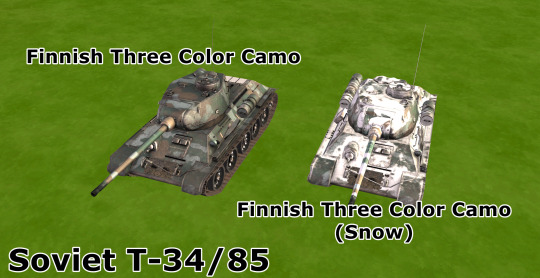

Finnish Army WW2 Medium Tanks
Another Sequel of Of Great Projects about Weapons and Heavy Machinery That Used During Winter War (1939-1940) & Continuation War (1941-1944). This Time Around Covering Medium Tanks that used by Finn. Like A Previous Project Finnish Army During WW2 Relied Captured Soviets Tanks, Obsolete WW1 Products Or Licensed Products From Allied Countries Like Germany Disclaimer:Due Heavy Censorship Regarding Swastika Usage in Western Society, The Details of The Tanks Are Replaced With Roundel Instead of Finnish Hakaristi. Here We go
LINK
Panzerkampfwagen IV Ausführung J The Panzerkampfwagen IV Ausführung J, also known as Gerät 550 or Sonderkraftfahrzeug 161/2, was the last variant of the famed Panzer IV. It was produced from January 1944 to the last days of April 1945 in the Nibelungenwerk (Ni-Werk) factory in Sankt Valentin, northern Austria.
This variant was characterized by many modifications made to the previous models in order to speed up production and save on valuable raw materials.
Sturmgeschütz III Ausführung G The Sturmgeschütz III (StuG III) assault gun was Germany's most-produced fully tracked armoured fighting vehicle during World War II, and second-most produced German armored combat vehicle of any type after the Sd.Kfz. 251 half-track. It was built on a slightly modified Panzer III chassis, replacing the turret with an armored, fixed superstructure mounting a more powerful gun. Initially intended as a mobile assault gun for direct-fire support for infantry, the StuG III was continually modified, and much like the later Jagdpanzer vehicles, was employed as a tank destroyer.
This particular model. the G variant of the StuG III tank destroyer comes with thicker armour of up to 80 mm on the front glacis and a 75 mm StuK 40 L/48 gun that gives the vehicle characteristics on par with a Panzer IV. With this cannon on a low-profile construction due to its casemate design, the StuG III G can prove to be a formidable vehicle in the ambush role.
Soviet T-34/85
The T-34 is a Soviet medium tank from World War II. When introduced, its 76.2 mm (3 in) tank gun was more powerful than its contemporaries,[8] and its 60-degree sloped armour provided good protection against anti-tank weapons. The T-34 had a profound effect on the conflict on the Eastern Front, and had a long-lasting impact on tank design. The tank was praised by multiple German generals when encountered during Operation Barbarossa, although its armour and armament were surpassed later in the war.
Replacing many light and medium tanks in Red Army service, it was the most-produced tank of the war, as well as the second most-produced tank of all time (after its successor, the T-54/T-55 series). With 44,900 lost during the war, it also suffered the most tank losses ever. Its development led directly to the T-44, then the T-54 and T-55 series of tanks, which in turn evolved into the later T-62, that form the armoured core of many modern armies. T-34 variants were widely exported after World War II, and as recently as 2010 more than 130 were still in service.
This Particular Model: The T-34-85 (German designation: T-34/85) was a major improvement with an 85 mm gun in a three-man turret.
Soviet T-28 Model 1938
The T-28 was a Soviet multi-turreted medium tank. The prototype was completed in 1931, and production began in late 1932. It was an infantry support tank intended to break through fortified defences. The T-28 was designed to complement the heavier T-35 (also multi-turreted), with which it shared turret designs. The type did not have great success in combat, but it played an important role as a development project for Soviet tank designers. A series of new ideas and solutions that were tried out on the T-28 were later incorporated in future models.
This Particular Model is T-28 Model 1938 (T-28B) – version with the improved L-10 76.2 mm gun (from 16.5 to 26 calibres). Some older tanks were also backfitted with spare L-10 guns. The rod antenna replaced the horseshoe in early 1939.
#the sims 4#the sims#the sims 4 custom content#ts4 cc#ts4military#the sims 4 military#ts4#the sim#the sims 4 cc#ts4cc#winter war#finnish#suomi#soviet union#the sims 4 decades challenge#sims 4 decades#ts4 decades challenge#1940s#1930s vintage#1930s#the sims 4 ww2#sims 4 war#finland
26 notes
·
View notes
Text
I might try and fish some ideas here.
Just as a fun project with little chance of playing games for it, I got some 15mm scaled miniatures for two forces for the game “Stargrunt II”, a war game with focus on platoon level combat in narrative play and scenario match designs, no points costs for units and such, and a third player “the umpire” is recommended to work as a game master of sorts.
And the universe is basic, and made to be a backdrop more for the players to make their own setting than anything. So, I got one force that is the “Space UN Peacekeepers: Future Scandinavian contingent” that actually fire back. Green camo troopers with closed helmets, and white peacekeeper vehicles.
And I also have the “Predators: But military!” as well.
But I got a third force to be very generic as well, and to add variety for scenario games or opposing forces when introducing games.


Mercs. Something like “Boston Raiders” or something with khaki uniform, armour, and some green details on the armour because that is their “regimental colour”. And red visors. But they have vehicles too.

Or, one at least. But I don’t know what to paint it in. Desert camo feels very space age-y, but would it just be khaki (dull?), or some good current desert camo. Or for added fun times, kind of scuffed looking stuff that you would see in the earlier days of modern warfare? WW2 German camo, I am thinking.
What would you guys think would look neat? Fishing for ideas, and see what I am missing.
12 notes
·
View notes
Text
WW2 German Brummbar armoured support gun study, completed in ink pen and markers.

#artists on tumblr#ww2 art#ww2#second world war#illustration#military art#military history#german army#werhmacht#panzer#inksketch#drawing#sketch#peteashford
14 notes
·
View notes
Text
1:72 Sd.Kfz 10 Zugkraftwagen 1t (Demag D7)
Joining the Special Armour range is the former MK72 kit of the Sd.Kfz 10. The smallest German WW2 half-track vehicle is here now in the form 1/72 scale tiny gem. The moulds were bought acquired from the MK72 firm and when the model had been first released, it got the Model of the Year award. The Sd.Kfz 10 was a half-track multi-purpose troop carrier. The original version was also used to tow…

View On WordPress
0 notes
Text
Leopard 1A1
Leopard 1A1
The Leopard was originally called the Europanzer due to it being a joint project with France however the French pulled out as the German prototypes weren’t what they wanted so they went and designed the AMX-30. The Leopard was the first tanks the Germans designed after WW2 and continued the theme from WW2 of naming their tanks after felines which is a questionable decision as they were trying to distance themselves form the second world war. The three companies involved in prototyping the Leopard were Porsche, Rheinmetall and Borgward, Borgward was the first company to fail as they didn’t manage to produce prototypes in time. Porsche won the competition as the most pre production designs were ordered. The Leopard was armed with one Royal Ordinance L7A3 105 mm gun and one coaxial MG 3. The top speed of the Leopard was 40 mph which was fairly standard for the time it was made. The Leopard had armour of around 70mm on the turret and 35mm on the hull which by itself isn’t great but with the armours angles it’s not bad. I unfortunately couldn’t find anything about it’s turret traverse rate but I would presume it’s on par with the M60s as it was designed to replace it’s predictor in Europe the M48 Patton.


Sources
https://tanks-encyclopedia.com/coldwar/West_Germany/leopard-i.php
http://www.army-guide.com/eng/product152.html
0 notes
Text
Now we get to the problem with plate armour resisting bullets.
Until the invention of ceramic plates, the only way to make any sort of steel or iron bullet proof was to make it VERY thick. And very thick armour is VERY heavy armour. Ned Kelly's impromptu armour, and the metal armour worn by WW1 German stormtroopers and pioneers and WW2 Soviet combat engineers were not light weight suits of armour. They were heavy, uncomfortable and just generally rubbish against bullets. Against fragmentation and debris thrown up by artillery shells and grenades, it did all right.
But against actual rounds from a gun, either rifle or shotgun? Nah.
The history of armour design and firearms is a big thing because you see that full plate armour still stayed in use right up until the 1900s, but also that the use of maille as a defensive dropped HEAVILY out of favour in the latter part of the 1500s and early 1600s.
7 notes
·
View notes
Text

StuG III assault guns replenish ammunition, unit, location and date unknown
24 notes
·
View notes
Text

• Sd.Kfz.2 Kettenkrad
The Sd.Kfz.2, better known as the Kleines Kettenkraftrad HK 101 or Kettenkrad for short. Ketten means "chains" or "tracks" and krad is the military abbreviation of the German word Kraftrad.
The vehicle was designed to be delivered by Junkers Ju 52 aircraft, though not by parachute. The vehicle had the advantage of being the only gun tractor small enough to fit inside the hold of the Ju 52, and was the lightest mass-produced German military vehicle to use the complex Schachtellaufwerk overlapped and interleaved road wheels used on almost all German military half-tracked vehicles of World War II.
Steering the Kettenkrad was accomplished by turning the handlebars: Up to a certain point, only the front wheel would steer the vehicle. A motion of the handlebars beyond that point would engage the track brakes to help make turns sharper. It was also possible to run the vehicle without the front wheel installed and this was recommended in extreme off-road conditions where speed would be kept low. The Sd.Kfz.2 was designed and built by the NSU Werke AG at Neckarsulm, Germany. Patented in June 1939, it was first used in the invasion of the Soviet Union in 1941. Most Kettenkräder saw service on the Eastern Front, where they were used to lay communication cables, pull heavy loads and carry soldiers through the deep Russian mud. Later in the war, Kettenkräder were used as runway tugs for aircraft, especially for the Messerschmitt Me 262 jet fighter, and sometimes the Arado Ar 234 jet reconnaissance-bomber. In order to save aviation fuel, German jet aircraft were towed to the runway, rather than taxiing under their own power.
The vehicle was also used in the North African theater and on the Western Front. The Kettenkrad came with a special trailer Sonderanhänger 1 (Sd.Anh.1) that could be attached to it to improve its cargo capacity. The trailer carried 350 kilograms. Being a tracked vehicle, the Kettenkrad could climb up to 24° in sand and even more on hard ground. Only two significant sub-variations of the Kettenkrad were constructed. Production of the vehicle was stopped in 1944, at which time 8,345 had been built. After the war, production resumed at NSU. Around 550 Kettenkräder were built for agricultural use, with production ending in 1948.
#ww2#second world war#german history#german engineering#wwii#world war 2#world war ii#armoured vehicles#motorcycle#military history#military equipment
120 notes
·
View notes
Photo





Jagdpanzer IV / 70A with remarkable battle damage from 1944. Now in the Musee des Blindes in Saumur, France. The allies captured and made it operational again and used it for the rest of the war.
#jagdpanzer#jagdpanzeriv#museedesblindes#france#saumur#tankmuseum#german#antitank#armor#armour#ww2#wwii
24 notes
·
View notes
Note
Now I have to preemptively apologise for going a little teaboo but the Germans were not the first to invent manoeuvre-based mechanised warfare. For one you were already seeing it start to form at the end of the First World War in the Entente, with the French and US forces using FT-17s in their offensives and the UK using their rhomboid tanks in combination with attached air support as well as the Whippet series of tanks. The Whippets were already being viewed as something that could take over the job of cavalry, exploiting breakthroughs created by the heavy tanks and infantry to then advance quickly with mounted infantry to seize key objects and ravage the enemy's rear. This is arguably also the start of the doctrinal division between Cruiser and Infantry tanks in the British army that would carry through WW2, to late 1945 and the deployment of the Centurion, a so-called "universal tank", now MBT.
But anyway, returning to the interwar period in the 20s and Europe is not really expecting a war. Germany is trying to find ways around the Versailles Treaty but is still heavily limited by it, France is France, and the UK isn't giving much focus to the army. But a few officers in the British army have been pushing for further tank development, both in equipment and doctrine such as George Lindsay and J.F.C Fuller.
Together with support from the RAF they formed the Experimental Mechanised Force, whose structure might sound awfully familiar to those who have looked at German early war Panzerdivisions. It had reconnaissance forces in tankettes and armoured cars with radios, tank battalions with Vickers Medium MkII tanks with an attached telephone section with radio tanks, battalions of infantry with one in half-tracks and the other motorised, artillery brigades equipped with self-propelled Birch Guns and towed artillery, a company of engineers fully motorised, and attached bomber and fighter support. The UK had created a fully mechanised force in 1927 and started exercises with the formation for a few years before concluding with the exercises, but had developed a theory of mechanised combined arms warfare.
So the Germans were not unique in their development of mechanised combined arms warfare. They did make a very impressive first showing and committed to it as hard as they could with their industrial capabilities, but would then later find themselves by the Allies with superior logistics and production capabilities which allowed them to mechanize to a far, far greater extent than the Germans who heavily relied on horses and foot infantry throughout the war.
What reasons would you say that Germany's tactic of Blitzkrieg was effective?
the main decisive factor in its effectiveness was its mobility and piercing ability. for hundreds of years, european armies developed strategies involving trench warfare and traditional tactics of conventional warfare, which largely involved thinly dispersing their army along the border. this is exactly what poland did, their army was actually about the same size as germany's, but they spread it out evenly along the border. the german blitzkrieg tactic exploited that by creating a highly concentrated group of mobile divisions (mainly tanks and motorized infantry) and piercing through the thin front line. they were then able to easily encircle and destroy the remaining enemy divisions along the front line.
in general, blitzkrieg was incredibly effective because it exploited the weaknesses of the tactics used by most european armies for the past hundreds of years, it completely revolutionized warfare
16 notes
·
View notes
Photo



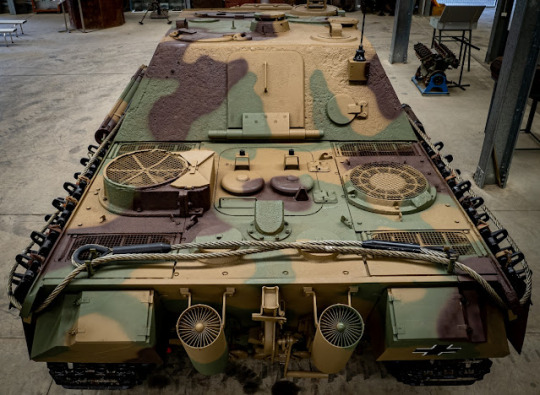
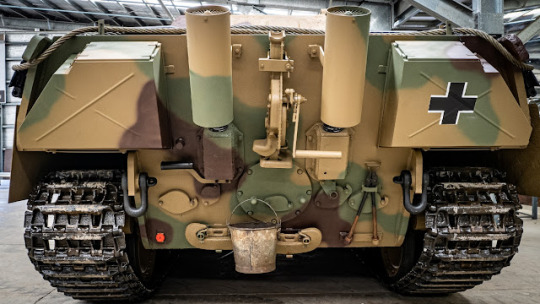
Fully restored Jagdpanther german WW2 tank destroyer of the Australian Armour & Artillery Museum.
214 notes
·
View notes
Text
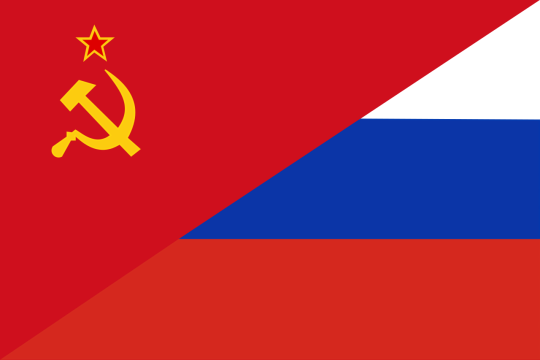
KHERSON CITY.. UPDATE LATEST, 24 October 2022:
YOU ARE NOT ALLOWED TO KNOW THAT TRUTH BY WESTERN MEDIA...
A few days ago, on Wednesday, the Nato/Zelensky forces launched the largest attack in Northern Kherson region, since their so called counter attacks started in early September. Columns of western armour, tanks, and s force of around 9,000 troops took to the main road towards Kherson city.. trying to overcome the defences of the Russian forces. It started with long range bombardment by US Hi-Mars rocket missiles. Of course, that system is a copy of the highly successful Soviet Katusha rocket launch system, of ww2.. which the US updated to longer range and more precise targeting. The Russians have similar rocket launch systems..but like all weapons, it has limitations and is vulnerable, as it's easily identifiable in it's location. That's why all Hi-Mars systems get destroyed by Russian long range precision missiles, and by Russian fighter/bomber jets. Usually the heavy US and German artillery and tanks, don't last more than a month, once on the battlefield. That's why Zelensky is constantly asking for more and more weapons. But the western stock, itself is running out. The US and Germany will have to set up part of their economies for military production. Russia already did that, a month ago..and now, it's getting in full swing of production.
So, on Wednesday the Nato/Zelensky troops had their biggest attack since the start of this hot war, towards Kherson city. That city got into Nato artillery range a week ago, and the Kherson government started to relocate it's civilians, immediately. Very careful and different approach to Zelensky, who never cares about civilian casualties..just leaves them exposed to the fighting, everywhere he controls...and actually uses civilians as human shields.. slowing Russian advances. That's one major reason for extending the war, putting off Russian final victory, a little longer.. anything, even huge Ukrainian casualties don't matter to the Western War Criminals, soundings and looking so well fed and self satisfied. Western politicians sicken all decent people around the world.. as soon as they open their big mouths about our Ukraine and our Russia.
Contrary to western media Disinformation, Kherson civilians are relocated, not because the Russian forces are abondoning Kherson, but because they are protecting their Russian Kherson citizens, leaving its military forces well dug in, and heavily armed..with more various Russian reinforcements arriving consistently, as needed. Kherson will never go to the west..Forget about that idea. Most Kherson civilians have said, that they hate Zelensky and his western handlers, and are not coming back to areas controlled by Zelensky and Nato..Never.
By Wednesday, the Russian military force, defending North of Kherson city, had 3 deep lines of Defence, well infront of Kherson city. With many deep bunkers and underground connection corridors. They have heavy calibre artillery, the biggest is of 186 millimetres, rolling in and out of protected positions..all facing the attackers, face on. When 186mm shell hits any Nato armour, it shreds the armour into hundreds of pieces, as if it never existed. Nothing can survive such hitting power..The Russians have a huge regular supply of these artillery pieces. And on Wednesday, Nato troops walked right into it..no need to say that nothing survived at the head and middle of that attacking force.
Furthermore, the Russian Airforce controls all air space on that battlefield...Nato birds avoid flying anywhere in Ukraine.
The Russian defending troops are twice less in numbers, but that isn't a problem for a good defense. In the past, the Russian forces were always outnumbered by the Nato/Zelensky forces..but that didn't make any difference. Russia still took all 5 new republics, and won the major battles..the ones that made a difference, for the final Russian Victory. So far, the Zelensky Nato forces have numbered since February to over 400,000..in total. By contrast, the Russian combined force has been around 150,000 troops. These are the approximate figures on which most commentators agree. Bare in mind, that so far for every Russian, Nato/Zelensky looses about 8.3 troops. So the gap has been reduced..but Nato keeps bringing more Poles and other foreign mercenaries to fight in our Ukraine. If that ain't a western invasion, then we don't know what an Invasion means, any longer.
As expected by experienced military commentators, on Wednesday Nato/Zelensky's attacking forces experienced the biggest defeat yet, in Ukraine, in the latest Kherson attack. They run into a wall of Russian steal, loosing 27% of their troops, and 18% of their armour. It was a blood bath, meat grinder yet again for Nato/Zelensky. The Russians didn't suffer even one death, in that big attack..they were very well covered. But when did these Kiev Nazis ever care about Ukrainian lives? Never. Now we all see, what the Washington statement in February meant: "We will fight to the last Ukrainian." Sure they will and do.
Now the collective western politicians, are all War Criminals. And Judgement day is coming. They will all have to answer for their crimes on the Ukranian population.. Infront of a Russian, Chinese, World Court of Justice.
In conclusion:
ANOTHER MAJOR RUSSIAN VICTORY IN NORTHERN KHERSON. THE BIGGEST DEFEAT FOR NATO, SO FAR. BARE IN MIND, THAT DESPITE ALL THE BIG WESTERN ANNOUNCEMENTS OF ADVANCES; NATO/ZELENSKY STILL HAVEN'T CAPTURED MORE THAN FEW BOGGY FIELDS, AND FEW EMPTY VILLAGES, SMALL TOWNS. AND IT APPEARS, WITH NEW RUSSIAN REINFORCEMENTS AND RUSSIAN ECONOMY IN PARTIAL WAR PRODUCTION, NOTHING CAN STOP THE FINAL RUSSIAN VICTORY.
☮️🇷🇺🇷🇺🇷🇺🇷🇺🇷🇺🇷🇺🇷🇺🇷🇺🇷🇺🌷🌷💯☮️ 🇧🇬🇦🇺🇷🇺🌍😘😘😘🇷🇺😘😘😘☮️
PS. Keep supporting our Slavic brothers and sisters from Russia and Ukraine. Don't keep silent..and don't let the Western Aggressor intimidate you. YOU ARE NEVER ALONE. WE AND MOTHER RUSSIA WILL NEVER ABONDON YOU, WHERE EVER YOU ARE ☮️🇷🇺🇷🇺🇷🇺🌍🇷🇺🇷🇺🇷🇺🇷🇺☮️💯🌷😘😘😘
P.S. 22November, 2022, Sydney Australia. Obviously the Russian command decided to evacuate Kherson city completely, as that position is vulnerable, with the backs of the soldiers against a wide and deep river. Now, the Russian army is just over the river, 400 metres on the Southeastern side. The Russians did not loose a battle, nor were they made to abondon Kherson city. They left by their own military decision, as the most rational tactic. All was done in most well organised manner. The videos of the move are available for all to view online.
That means that they will have to retake Kherson city in a few months and then drive further Northwest. The main aim now is to clear all the Eastern pockets left with Zelensky/Nato troops, and then push further west and to Odessa. Everyday the battleground reports state that the Russian forces are destroying fast amount of enemy troops and surrounding the enemy around the main battles. The aim now, as it always was, is to destroy the Zelensky military.. make it incapable to defend itself and the Zelensky regime. Most respected observers predict the Russian victory to come by next northern summer.
On different issue: It always disappoints us how some young Americans, called 'dudes' reply to posts of support for Russia. As if this war is a computer game, or a joke. It shows great disrespect to all who die in wars.. and most modern wars have been the result of their own country's actions, and as the Ukraine war was started in 2014. One would have to assume that the US government puts something in the food, it feeds these guys. Grow up.. show some self respect, at least.
31 notes
·
View notes